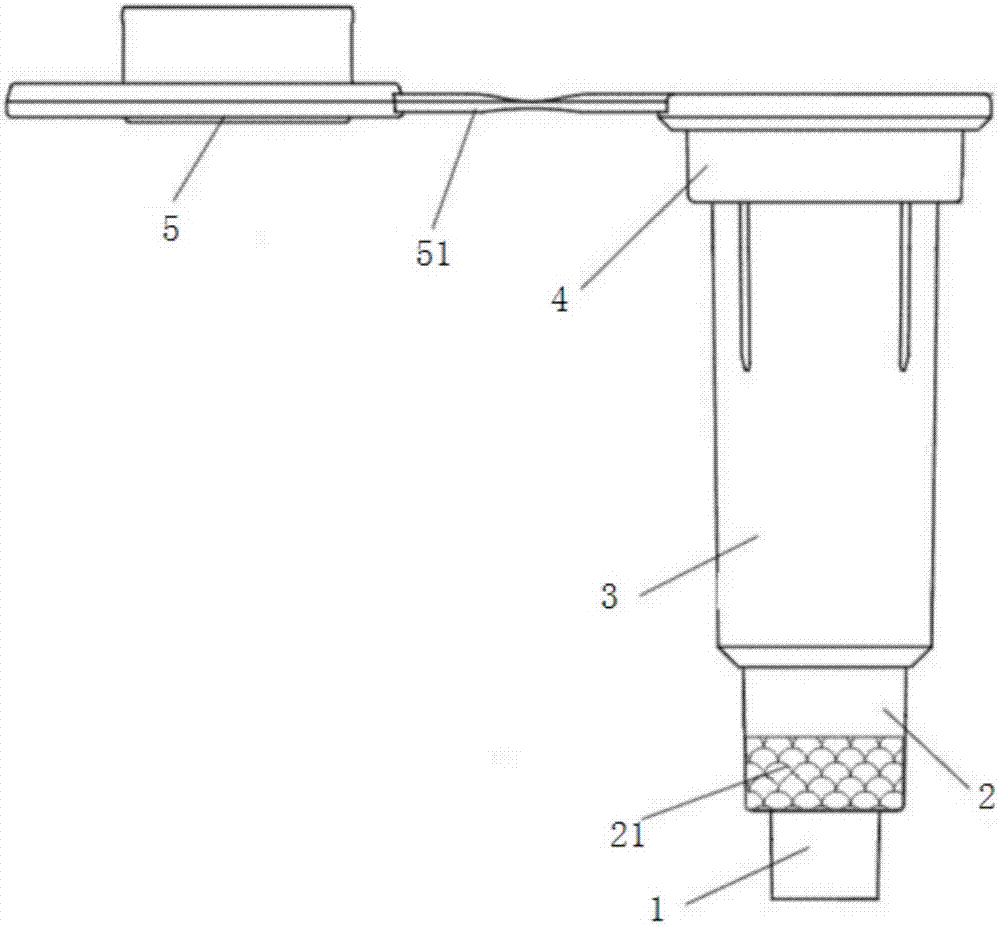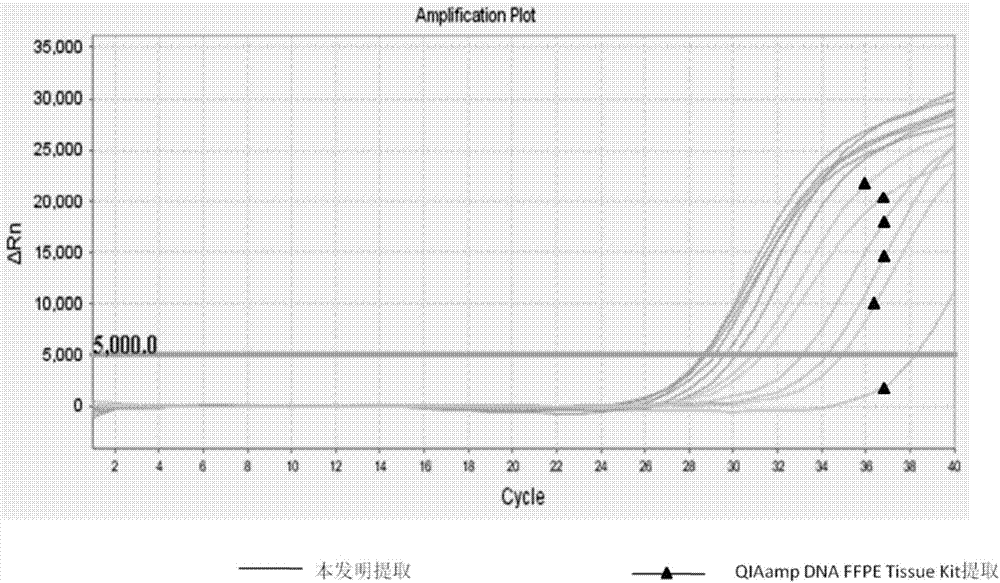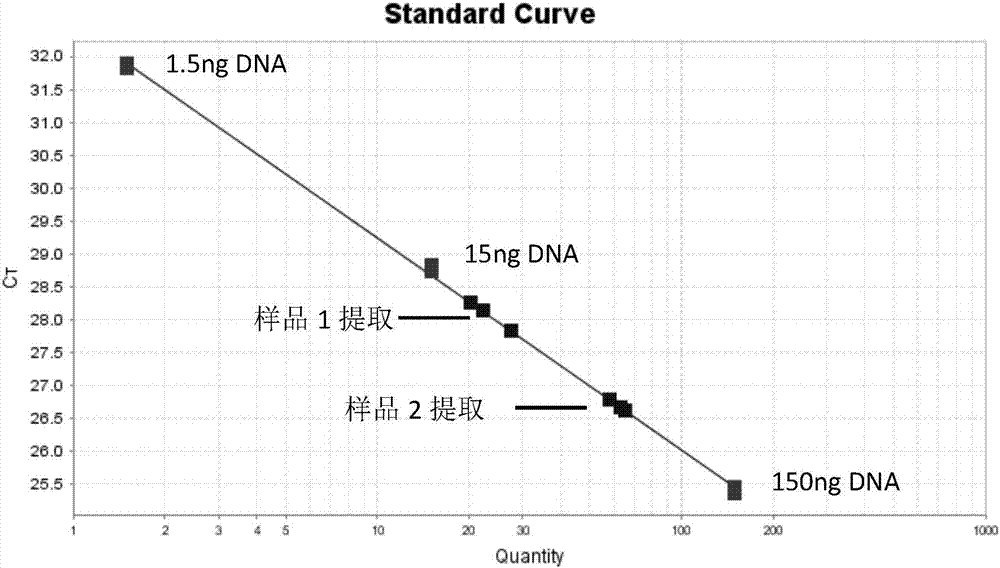Kit and method for rapidly releasing nucleic acid from paraffin-embedded tissue sections
A technology of tissue sectioning and paraffin embedding, which is applied in the field of nucleic acid extraction, can solve the problems of DNA molecular breakage and crosslinking, low recovery efficiency, loss of nucleic acid fragments, etc., and achieve the effects of high recovery efficiency, easy operation and low manufacturing cost
- Summary
- Abstract
- Description
- Claims
- Application Information
AI Technical Summary
Problems solved by technology
Method used
Image
Examples
Embodiment 1-3
[0055] The reagent formula table in the kit of table 1 embodiment 1-3
[0056]
[0057]
Embodiment 4
[0059] Adopt the reagent of embodiment 1 to release nucleic acid rapidly from paraffin-embedded tissue section, method is:
[0060] Cut paraffin sections: Cut 3-7 5uM FFPE sections from paraffin-embedded tissues.
[0061] Release nucleic acid: put the sample slice into a centrifuge tube, add 100ul nucleic acid release reagent ①, 20ul proteinase K solution, mix well, and incubate at 56°C for 10min. Add 100ul nucleic acid release reagent ②, vortex and mix well, and incubate at 90°C for 10min. Finally, the lysed product is transferred to a spin column using nitrocellulose as a filter membrane material, and the target nucleic acid is obtained by filtration.
Embodiment 5
[0063] Adopt the reagent in embodiment 2 to release nucleic acid rapidly from paraffin-embedded tissue section, method is:
[0064] Cut paraffin sections: Cut 3-7 5uM FFPE sections from paraffin-embedded tissues.
[0065] Nucleic acid release: put the sample slice into a centrifuge tube, add 500ul nucleic acid release reagent ①, 50ul proteinase K solution, mix well, and incubate at 56°C for 60min. Add 500ul of nucleic acid release reagent ②, vortex and mix well, and incubate at 90°C for 20min. Finally, the lysed product is transferred to a spin column using silica as a filter membrane material, and the target nucleic acid is obtained by filtration.
PUM
 Login to View More
Login to View More Abstract
Description
Claims
Application Information
 Login to View More
Login to View More - R&D
- Intellectual Property
- Life Sciences
- Materials
- Tech Scout
- Unparalleled Data Quality
- Higher Quality Content
- 60% Fewer Hallucinations
Browse by: Latest US Patents, China's latest patents, Technical Efficacy Thesaurus, Application Domain, Technology Topic, Popular Technical Reports.
© 2025 PatSnap. All rights reserved.Legal|Privacy policy|Modern Slavery Act Transparency Statement|Sitemap|About US| Contact US: help@patsnap.com



